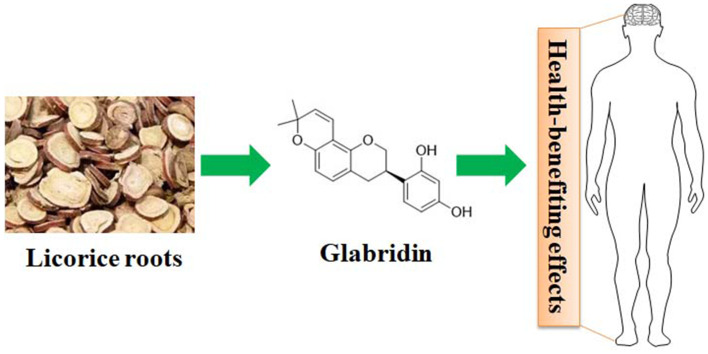- Record: found
- Abstract: found
- Article: found
Review on the Diverse Biological Effects of Glabridin

Abstract
Glabridin is a prenylated isoflavan from the roots of Glycyrrhiza glabra Linne and has posed great impact on the areas of drug development and medicine, due to various biological properties such as anti-inflammation, anti-oxidation, anti-tumor, anti-microorganism, bone protection, cardiovascular protection, neuroprotection, hepatoprotection, anti-obesity, and anti-diabetes. Many signaling pathways, including NF-κB, MAPK, Wnt/β-catenin, ERα/SRC-1, PI3K/AKT, and AMPK, have been implicated in the regulatory activities of glabridin. Interestingly, glabridin has been considered as an inhibitor of tyrosinase, P-glycoprotein (P-gp), and CYP2E1 and an activator of peroxisome proliferator-activated receptor γ (PPARγ), although their molecular regulating mechanisms still need further investigation. However, poor water solubility and low bioavailability have greatly limited the clinical applications of glabridin. Hopefully, several effective strategies, such as nanoemulsions, microneedles, and smartPearls formulation, have been developed for improvement.
Graphical Abstract
Most cited references145
- Record: found
- Abstract: found
- Article: not found
A molecular modeling approach to identify effective antiviral phytochemicals against the main protease of SARS-CoV-2
- Record: found
- Abstract: found
- Article: not found

